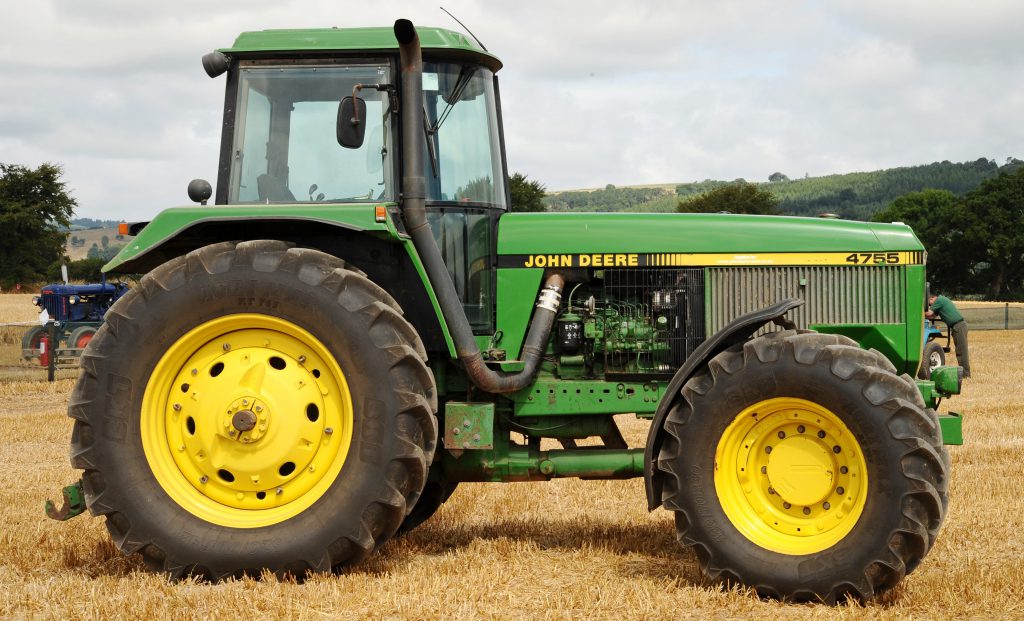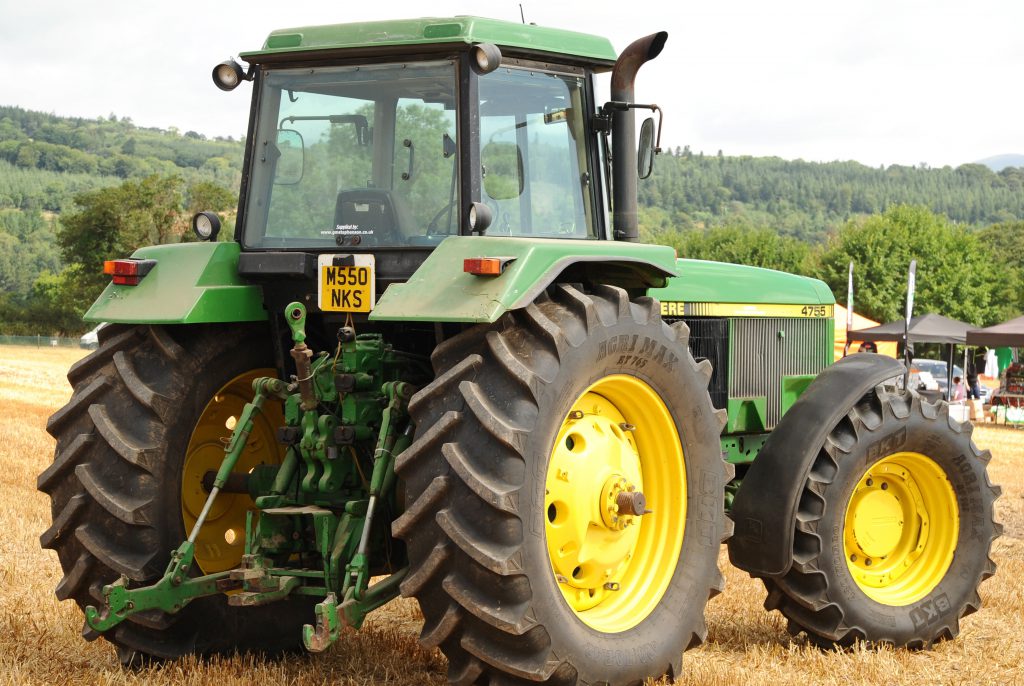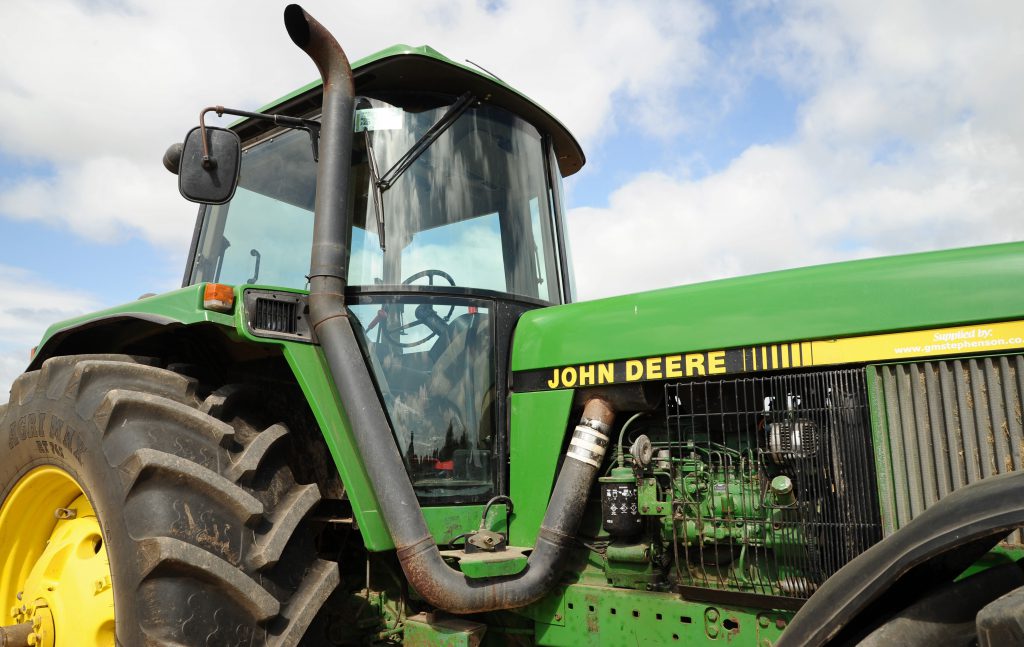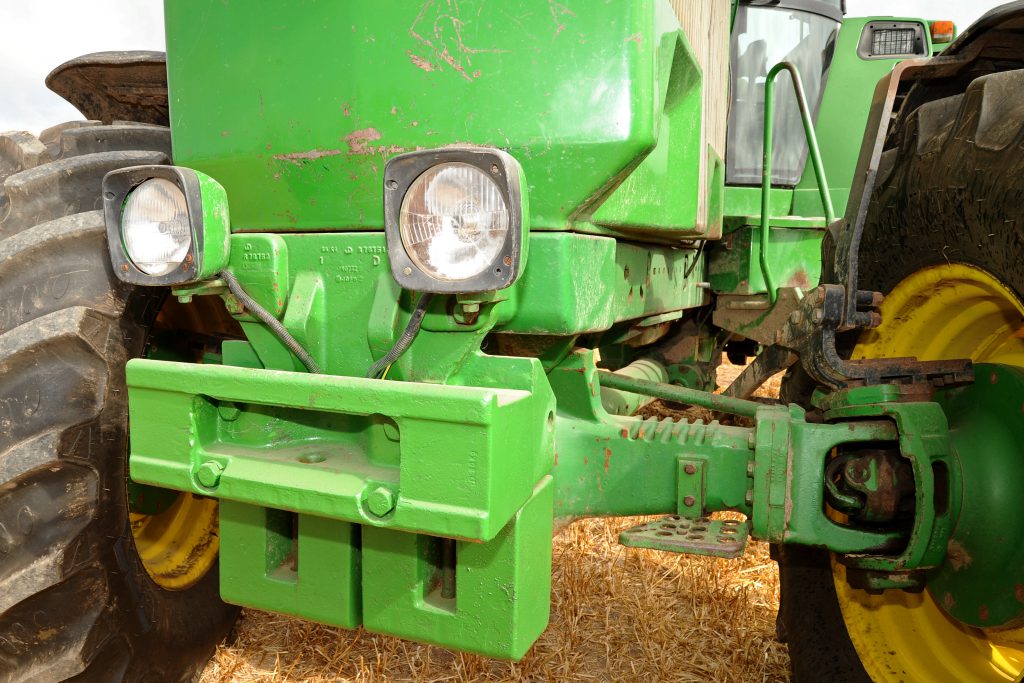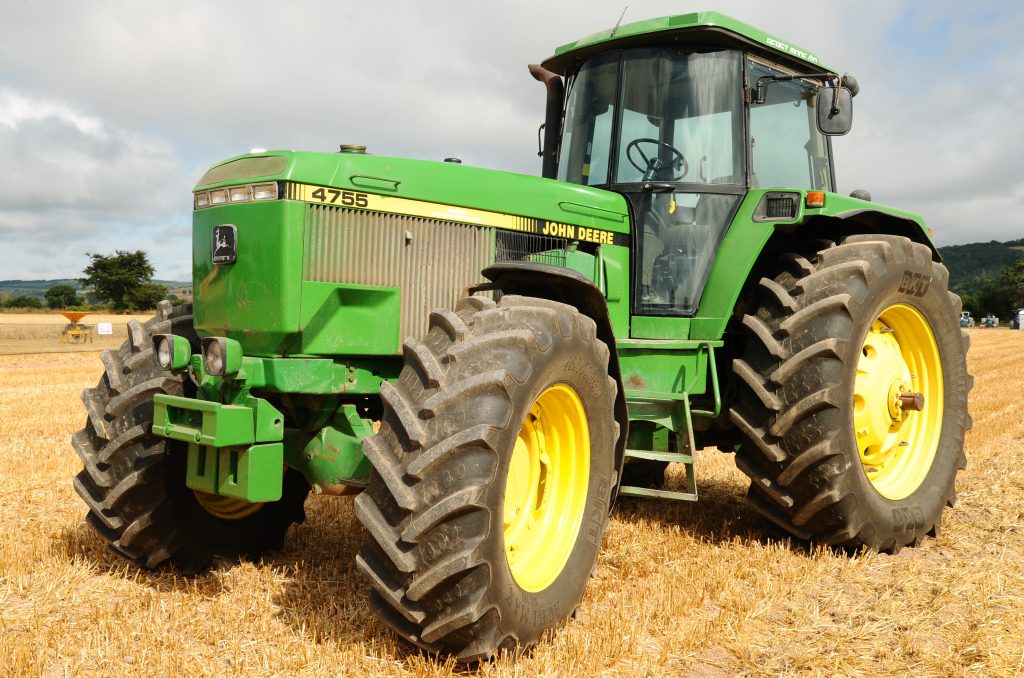John Deere practically reinvented itself back in 1960; it was a dramatic event – perhaps the most significant in its history.
It was this introduction of the ‘New Generation’ range of tractors, with engines that were not only inline but also vertically arranged, that catapulted the company into the modern era.
At the time of that launch the top tractor was the 4010 – offering about 88hp from its six-cylinder engine. This model was the first of a series that went on to represent the high-horsepower end of medium-sized tractors, right up until 1994 when the demise of the 222hp 4690 brought the era to a close.
In between, there were many revamps and upgrades which kept that ‘line’ of tractors fresh and up-to-date. One major reworking of the formula was introduced in January of 1989 when the company brought out the 55 series.
This line-up comprised six models. The smaller three were known as the narrow-frame models. They can be distinguished by having a line of three headlights across the front of the bonnet.
The larger three tractors had four headlights and were, unsurprisingly, known as the wide-frame models. The largest two had inter-coolers as well as turbochargers.
These were big beefy machines, having been designed and built at the Waterloo plant in Iowa. John Deere has always been loyal to the idea of decentralisation of the company. It showed in these tractors, which had a design ethos quite at odds with European-developed models.
The American way was to include as much metal as was considered necessary and then throw in a fair bit more for good measure. The European philosophy, by contrast, was to use materials sparingly and add weight as required.
One other notable aspect of the new 55-designated machines was that the most powerful (the 4955) was the first John Deere row-crop (as opposed to articulated) tractor to provide 200hp at the PTO. This was quite a landmark at the time (but hardly exceptional nowadays).
All six machines shared the same engine. Just like its predecessors, this was a six-cylinder unit, although the displacement had increased to 7.6L.
All models were turbocharged and came with either a 15-speed PowerShift gearbox or 16-speed Quad Range transmission. They were also the first John Deeres to have automatic engagement of 4WD.
With the exception of the 4555, the new range was available in Europe. The smaller of the two wide-frame tractors was the 4755 – an example (pictured) of which is here in Ireland. It is well cared for by John Cashman (pictured below), originally from Co. Wexford.
This John Deere 4755 was, when new, rated at 194hp with a PTO output of 175hp. However, a test specimen achieved 180hp at the PTO when tested at Nebraska in 1989.
This is a large machine – designed for the open field. The 4755 weighs 8.34t (unballasted).
It was in Yorkshire (England) that this tractor was put to work when it was in the UK. Firstly, it was used as a tillage workhorse. Then, in the years that followed, it was used on a big square baler – a machine that is notoriously unkind to lightweight tractors (but to which this chunk of US muscle was ideally suited).
Despite being 24 years old, it has just 4,750 hours on its digital clock (odometer).
The 4755 was kept in production for just two years before being replaced by the 4760 in certain markets, though the changes were slight (including re-positioning the exhaust stack to the ‘corner’ of the cab).
However, here in Europe the updated version was still badged as the 4755 – making this 1994 example one of the last to roll off the production line.



